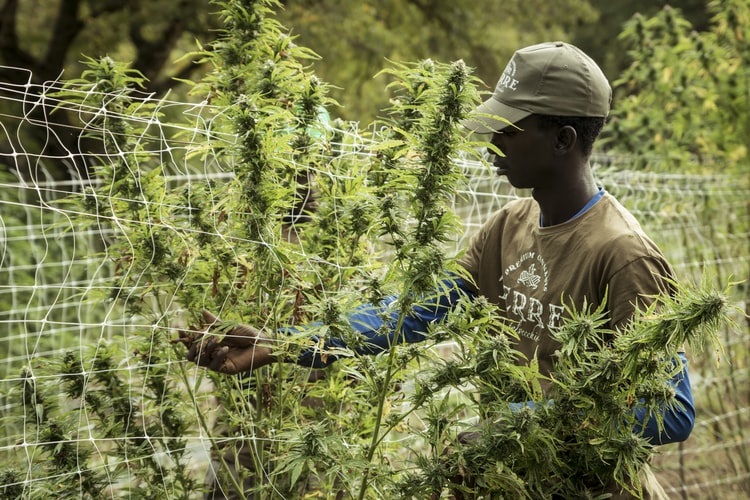Bud rot in cannabis is the best enemy of pot lovers and growers. It is something that you would never wish to see on your precious plant. It is even dangerous to smoke moldy cannabis. You may be one of the victims of this harmful mold. Right now, questions might be running in your mind such as “How are you going to deal with it?”, or “What are the ways to prevent it?”
Worry no more. In this article, we will help you deal with bud rot. There are many things that you can do. Deal with it if it strikes your plant or prevents its future attack while you still can.
Defining Bud Rot in Cannabis
Like other plants, the cannabis plant attracts pests such as whiteflies, and they may be susceptible to fungi, including mildew and many others. However, among others, bud rot is the most threatening fungal infection. It targets the buds of the plant and directly destroys them in days.
Bud rot infects the cannabis plant. It is usually characterized by a build-up of mold that destroys the buds of the flowering plant. As it develops, cannabis growers may see a white and hairy, regular-like fungus such as the ones found in the left-over from the fridge. Later on, the bud rot will slowly turn brown, black, or slightly purple. As it fully develops, buds may be covered with a cloud of thick and dark dust, soft and mushy. In some cases, other buds may turn dry and dark.
Most of the time, bud rot is tricky to spot as it only becomes visible once it is already underway in attacking the plants. One of the early signs of the infection is dry, yellow leaves that usually occur after heavy rains.
Be observant. Cautiously check out your plants from time to time.
What Are the Symptoms of Bud Rot?
Bud rot in cannabis is usually unnoticeable. As a cannabis grower, please check these signs in your growing plants. If they have any of these, your plants may be suffering from bud rot.
- The edges of the cannabis plants look brown and burnt.
- The leaves of the cannabis plant turn into red or purple.
- There are visible spots on the leaves
- The abnormal growth of the leaves is noticeable.
- Molds are visible
How Bud Rot Develops
Botrytis Cinerea is a widespread fungal disease. It affects cannabis plants before or after harvest. It starts to develop in the dense area of the buds. It initially strikes the stem of the buds and starts to work its way out. As it continually develops, it breaks down the surrounding bud and continues to spread in all directions.
Since Botrytis Cinerea is an airborne plant pathogen, it can induce programmed cell death. This fungus quickly spreads from one plant to another through infecting a simple wound or of a plant. After successfully infecting a new host, it will continue to thrive and affect the other parts of the garden.

How To Effectively Deal With Bud Rot In Cannabis
When bud rot affects the cannabis plant, there is a high tendency of losing precious buds. The infected buds are not recommended for smoking since they will cause harm to smokers. As such, it must be disposed of.
Also, once one of the cannabis plants in the area becomes infected, there is a higher chance of widespread infection. With this, it is best to deal with the infection as soon as it is detected. Fortunately, experts were able to develop simple yet great ideas in the prevention and in dealing with the bud rot in cannabis plants.
Effective Ways To Deal With Bud Rot
The following are some of the efficient ways to deal with the bud rot in the cannabis plant:
If a portion of the cannabis plant is already infected, remove the molded buds
Get a knife or a pair of scissors, dip it in rubbing alcohol then cut around the damaged area. 90% Isopropyl alcohol is recommended to use for this process. After cutting, clean the newly exposed damage of the plant with alcohol using a Q-tip. You can repeat steps 1 and 2 as necessary but always remember to dip the knife/scissor in alcohol between the cuts.
Remove damaged or dead leaves
Take note, this type of fungi may remain in the dead plant materials such as leaves. It will stay dormant and wait for the chance to attack. Since it spies for another possible attack, it is recommended to remove the area where it is living. Removing the dead leaves means removing the chance of the fungi to attack for the second time.
Prevent bud rot in cannabis
Seemingly, a lot have been attracted to grow cannabis plants for consumption. However, starters may struggle to grow this plant as it needs care and proper treatment. For some enthusiasts, they invest in growing guides or journals to efficiently grow this plant. Here are the simple steps to grow this plant while preventing the bud rot from crashing into your greenery.
Adjust the environment to prevent mold
Lower the humidity. Gray mold lives and thrives in places with high moisture and less sunlight. When growing cannabis, the growing area must be exposed to sunlight and has wind coming through. If necessary, use dehumidifiers or circulation fans. The recommended humidity when growing cannabis plants (depending on their growth) is 30 up to 70%. Make sure to cover plants and shake them off after being exposed to rain or being wet to help them quickly dry. Use a moisture monitoring device if possible.
Protect buds
Since buds are the main target of this fungus, always remember to protect the buds. They may initially thrive without being noticed. To protect your buds, avoid dew formation and unexpected rainfall. Growers are advised to build a plastic-covered PVC greenhouse over the plants. Watering is advisable during mornings, so the soil will be fully dry during night time.
Increase airflow
Since it needs a recommended humidity level, cannabis plants should be grown or located in hot, sunny, and windy hillsides or areas. It is not advisable to have other surrounding plants. It may only disrupt the excellent airflow. They need direct airflow. Good airflow reduces the chances of a condensation problem.
In the grow room, fans must be mounted on the sides of the area. This is to allow better air displacement in the canopy.

Keep the temperature warm
The room temperature is the leading cause of germination and the spreading of fungal spores. When growing cannabis plants, it is recommended to keep the temperature above 20°C (68°F) in the growing space. This temperature will not allow the fungus to germinate, spread, and damage the buds of the cannabis plants. Check the temperature from time to time as it plays a vital role in the spread of fungus in the area.
Prune cannabis plants
Since bud rot has the characteristic of being hard to detect, they mostly thrive in big, thick, and bushy plants. They love it when the area is full of bushy cannabis. If the plants grow thick and bushy, especially in wet and humid climates, make sure to prune them. If you prune them, you also prune the chances of fungus to germinate and spread.
Always check the Colas
Buds are the target area of this fungus. They always love to stick around the fattest and the dankest colas of the cannabis plants. Make sure to protect this essential part. Check it from time to time. Once you find a slight infection, do not fail to treat it as early as possible. Early intervention plays an essential role in preventing the spread of the infection in the precious buds of the plants.
Importance of Preventing Bud Rot
Bud rot is considered the worst enemy of cannabis users and cannabis growers. If not dealt with accordingly, it may compromise the cannabis product and the consumption of users.
Even before its legalization in several countries, cannabis is used to treat humans’ psychological and physiological problems. Today, the world continually conducts further studies to define its importance and highlight its benefits for public consumption. With this, many people are becoming more attracted to cannabis to try their benefits. Hence, production increases from time to time.
But, bud rot may affect the production of cannabis if not dealt with accordingly. When left unnoticed, it may compromise the health of the user. Given these negative effects, it is highly recommended for growers to check their plants. Deal the problems on mold accordingly and formulate steps or ideas on bud rot prevention in the cannabis plants.
Share your insights about dealing and preventing bud rot in cannabis. Together, we can solve this rising concern, grow more healthy buds, and produce more to cater to the increasing needs of the public. If you are a cannabis grower and having a problem with the bud rot yet you have followed the suggestions above, you don’t have to worry because your cannabis will be bud rot free.

